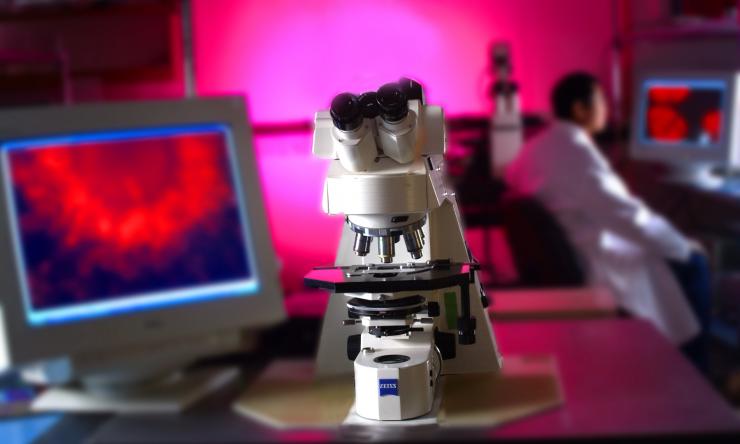Find faculty whose research interests match your own
The most important element for a successful postdoctoral experience is finding the right mentor – one whose research interests align with your own and one with a mentoring style that works for you.
First, you need to identify BCM researchers conducting research in your areas of interest. There are several paths we encourage you to explore to identify faculty whose research interests match your own and then to learn more about that investigator.
1. View the list of faculty with keywords who have indicated an interest in hiring a postdoc soon. This list is updated regularly.
2. See the training programs that support postdoctoral associates (e.g. T32)
3. Browse the faculty bios by research area in each of our interdisciplinary Ph.D. programs:
- Cancer & Cell Biology
- Chemical, Physical & Structural Biology
- Development, Disease Models and Therapeutics
- Genetics & Genomics
- Immunology & Microbiology
- Neuroscience
- Quantitative & Computational Biosciences
4. Search BCM faculty profiles by keyword in the VIICTR database.
5. Explore department and center research pages.
Postdoc Research
You may also want to search the From the Labs blog to find articles on topics of interest to you featuring faculty, postdocs and grad students working in labs that interest you.

17p11.2 syndromes are much more than deletions and duplications
In this study published in Cell, postdocs Drs. Christine Beck and Zeynep Coban-Akdemir and others working in the lab of Dr. James Lupski used an array of high-resolution technologies and powerful statistical analyses to confirm and expand their previous observations related to 17p11.2 syndromes. This study has opened a window into the complexity of the genetic changes in this small region of chromosome 17 that lead to two rare conditions and suggests that other conditions that involve duplications or deletions of chromosome segments may arise by similar mechanisms.

Connecting Zika virus and hereditary microcephaly
Understanding how Zika virus causes microcephaly would hint at possibilities for preventing this irreparable condition in newborns. Heading in that direction, a collaboration between Baylor College of Medicine and the University of California, San Francisco revealed interesting insights into the interactions between Zika virus proteins and host proteins, including human proteins. Learn more in this article featuring co-first author of the paper published in Cell, Dr. Nichole Link, a postdoctoral associate in the lab of Dr. Hugo Bellen.

Solving the mystery of CLN8’s connection with Batten disease
As a postdoc in the lab or Dr. Marco Sardiello, Dr. Alberto di Ronza investigated the mystery of how mutations in a protein that is not in the lysosome would result in a lysosomal storage disorder. “I started this research because I wanted to contribute to the improvement of patients’ lives,” di Ronza said. “Patients with CLN8 defects have limited options, but I hope that this work will provide opportunities to explore potential new therapies for these patients.” Read this article that explains their study published in Nature Cell Biology.

This brain circuit allows the feeding and memory centers to talk to each other
Dr. Wenjun Zhou, postdoc in the lab of Dr. Zhen Sun, and Dr. Yanlin He, postdoc in the lab of Dr. Yong Xu, were co-first authors on this study published in Nature Neuroscience. The team set out to investigate how the protein complex NCOR1/2 regulates memory. They ended up finding a new circuit that links the lateral hypothalamus and the hippocampus.

Making ‘sense’ of the ‘cart before the horse’ in mammalian cells
According to the accepted notion, fusion genes precede fusion RNA, but some studies have raised doubts that this is always the case. In this study published in the Proceedings of the National Academy of Sciences, first Author Dr. Sachin Kumar Gupta, postdoc in the lab of Dr. Laising Yen and colleagues, investigated whether a fusion RNA can induce the corresponding fusion gene.

The power of the microbiome: A microbe-based treatment reverses social deficits in mouse models of autism
An unconventional bacteria-based approach has successfully reversed deficits in social behaviors associated with autism spectrum disorders (ASD) in genetic, environmental and idiopathic mouse models of the condition. In this article, Dr. Mauro Costa-Mattioli, corresponding author of the work, and first author and postdoctoral associate, Dr. Martina Sgritta talk about their discovery that administration of the bacterial species Lactobacillus reuteri to mouse models of ASD leads to specific changes in the brain that result in the rescue of normal social behaviors. The research was published in Neuron.
From the Labs
Subscribe to From the Labs to be notified of new articles featuring research by BCM faculty, postdocs and graduate students.









